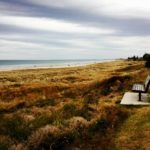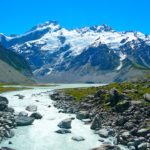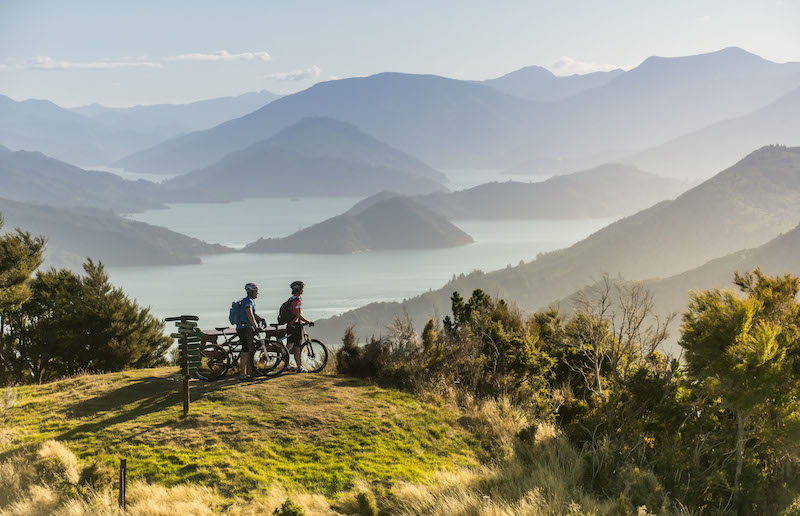
Wellington (TAN): New Zealand is a great place to go cycling. The archipelago nation has a network of 22 multi-day cycle trails called ‘Great Rides’ with 2,500 kilometres of varied, scenic and off-road cycling trails that attract a million visitors every year.
With International Bike Day on June 3 not too far away now, the New Zealand government continues to develop new trails, and maintain and improve existing cycleways. The newest project is a 530-kilometre continuous cycle trail network across the Otago region which will connect four existing Great Rides and link 30 communities.
A growing number of bike enthusiasts, from highly experienced mountain bikers looking for a thrill to weekend bikers who just want to enjoy nature away from the crowds, have been discovering Nga Haerenga (The Journeys) – New Zealand’s cycle trail which comprises 22 Great Rides and covers over 2,500 kilometres, says Tourism New Zealand.
[ALSO READ: Thailand extends visa vee waiver till October 31, 2019]
New Zealand’s relatively small size and diverse scenery is a perfect recipe for a varied cycling experience. Mighty rugged mountains, lush green subtropical forests and wild coastlines can be reached within a couple of days of each other.
While cyclists aren’t able to travel the length of New Zealand on Nga Haerenga as it’s a network rather than one uninterrupted trail, they’re able to get a taste of almost every region and landscape.
The northernmost ride on the Cycle Trail is the Twin Coast Trail in Northland, which stretches from the Bay of Islands to Hokianga Harbour. A number of trails pass through the central North Island, and the Remutaka Cycle Trail starts in Wellington, goes over the Remutaka Range and heads down to the south coast of the North Island.
[ALSO READ: Check out this cannabis-friendly bed and breakfast in California]
In the South Island the trails include the Queen Charlotte trail at the top of the island, the Central Otago Rail Trail, the Roxburgh Gorge trail and the Around the Mountains trail close to Queenstown further south.
Richard Leggat, chair of New Zealand Cycle Trail, says almost half a million people have jumped on their bikes to enjoy Nga Haerenga so far. Some have braved challenging multi-day tracks while others just enjoyed a leisurely half day ride on an e-bike.
Leggat says that what makes it so special is not the ride itself, but “what you can see, smell and experience while riding a bike that you can’t get anywhere else.”
[ALSO READ: Once a maternity hospital, now a boutique hotel]
While some of the trails still need more work and the infrastructure around others is still growing, Leggat says that some Great Rides are already outstanding and have attracted glowing reviews from locals and tourists alike.
The Timber Trail, central North Island
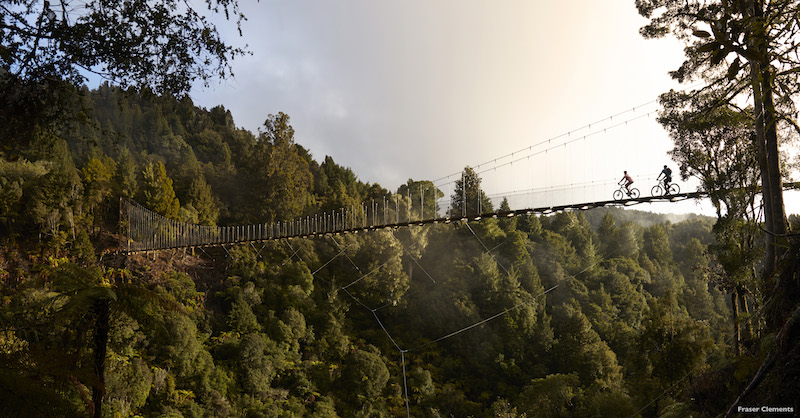
One of the highlights of Nga Haerenga is the Timber Trail. About three hours drive from Auckland it’s a real wilderness cycling experience that combines pristine forests with history, conservation and fantastic cycling.
“Pureora Forest is a special place for Maori,” says Bruce Maunsell, one of four directors of a lodge which welcomes tired cyclists halfway. “There is a real sense of spirituality as you ride through stands of magnificent podocarp and moss laden kamahi forests that are reminiscent of Middle Earth (from Lord of the Rings).”
The trail meanders through forests which were saved from logging during the anti-logging protests of the 70s and 80s. Today Pureora is home to some of New Zealand’s rarest wildlife and plant species and is a special conservation area.
[ALSO READ: Check out this American bed and breakfast where people come for the music]
The infrastructure along the trail is well established, with a shuttle bus, bike hire and the Timber Trail Lodge offering a cosy stay halfway. The purpose-built lodge is completely off-grid, powered by solar generated electricity and follows carefully thought out sustainable operating practices.
“It’s a great base for a couple of quiet days in the bush,” Maunsell says.
The range of cyclists riding the Timber Trail is huge, attracting both Kiwis and overseas visitors of all ages.
[ALSO READ: What Keanu Reeves did when an United Airlines flight made an emergency landing]
Many of these are fit bikepackers who include the Timber Trail as part of a long distance journey around New Zealand, while others use e-bikes to experience the moderately easy 42-kilometre long trail.
Old Ghost Road, West Coast, South Island
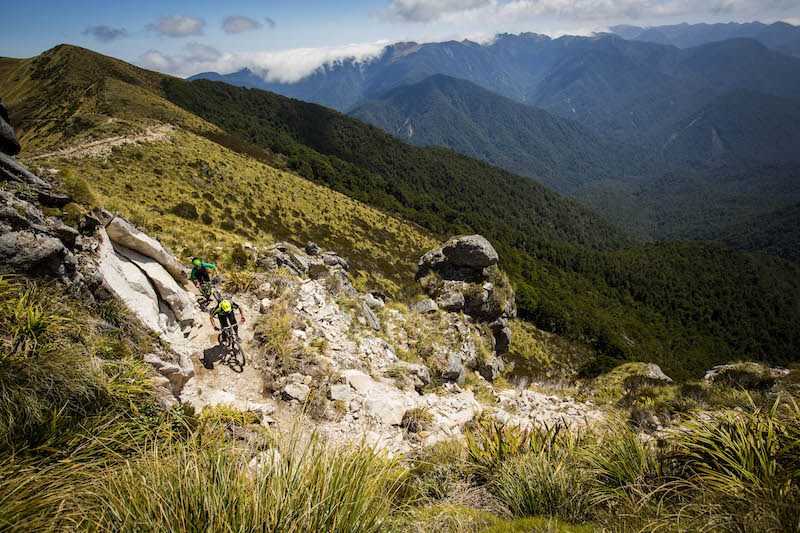
In contrast to the Timber Trail which is suitable for riders of all ages and abilities, the Old Ghost Road Track should only be attempted by cyclists who are technically competent, fit and totally self-sufficient.
Located in the northwestern corner of the South Island, the 85 kilometre single-track adventure passes through remote valleys, over mountain tops and along river gorges and has made a name for itself as one of the ultimate backcountry rides.
The trail follows a resurrected old gold miners’ route between the ghost town of Lyell in the Buller Gorge and Seddonville on the West Coast.
The purpose-built trail comprises a mixture of long steep climbs, narrow trail, poor traction and difficult obstacles to avoid or ride over but recoups riders with views of alpine tarns, tumbling rivers and waterfalls
[ALSO READ: Etihad operates Earth Day flight to Brisbane with no single-use plastic on board]
Less plush, but set in spectacular locations, from mountain high to valley low, the trails huts and tent sites along the track convince with sunsets, starry skies and birdlife.
Alps 2 Ocean, central South Island
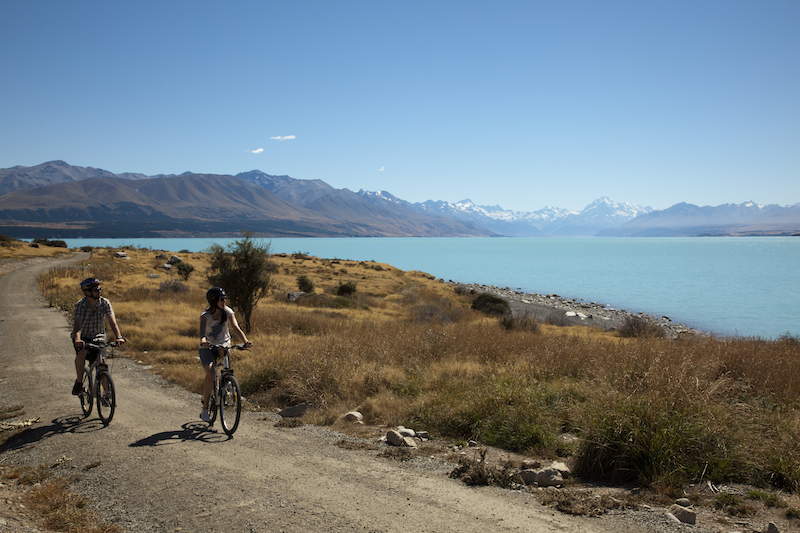
Another completely different cycling experience is New Zealand’s longest continuous cycle trail, Alps 2 Ocean, which stretches more than 300 kilometres from the country’s highest mountain to the Pacific Ocean in Oamaru.
Starting at the foot of Aoraki/Mt Cook in the Southern Alps, cyclists cruise along the Tasman Valley floor to reach the glacial-fed Lake Pukaki, known for its unique and bold aqua-blue colour.
“Photos of the lake look like they’ve been photoshopped, but they really haven’t. That’s really how blue it is,” Tourism Waitaki’s Lisa Smith says.
[ALSO READ: Future of trail travel? Here’s what Virgin train is proposing]
Further down the track riders can discover local fossils uncovered in the Vanished World Centre in Duntroon, view early Māori rock drawings, stroll among limestone rock outcrops at Elephant Rocks and enjoy the numerous limestone escarpments found in the lower reaches of the trail.
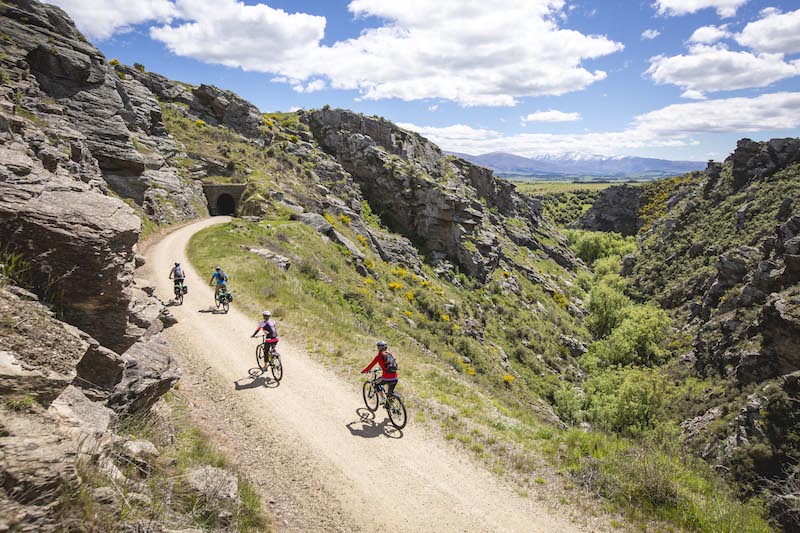
“Cycle tourism brings people into the region. They stay for a longer time which delivers really positive economic outcomes for people who have businesses which support riders on the trail,” Smith says.
And while some of the trails still have some growing to do, they all have one thing in common. They’re aimed at getting cyclists off the beaten track and immersed in New Zealand.
“It’s quite a different way to experience the country from being in a car,” says New Zealand Cycle Trail chairperson Richard Leggat.

